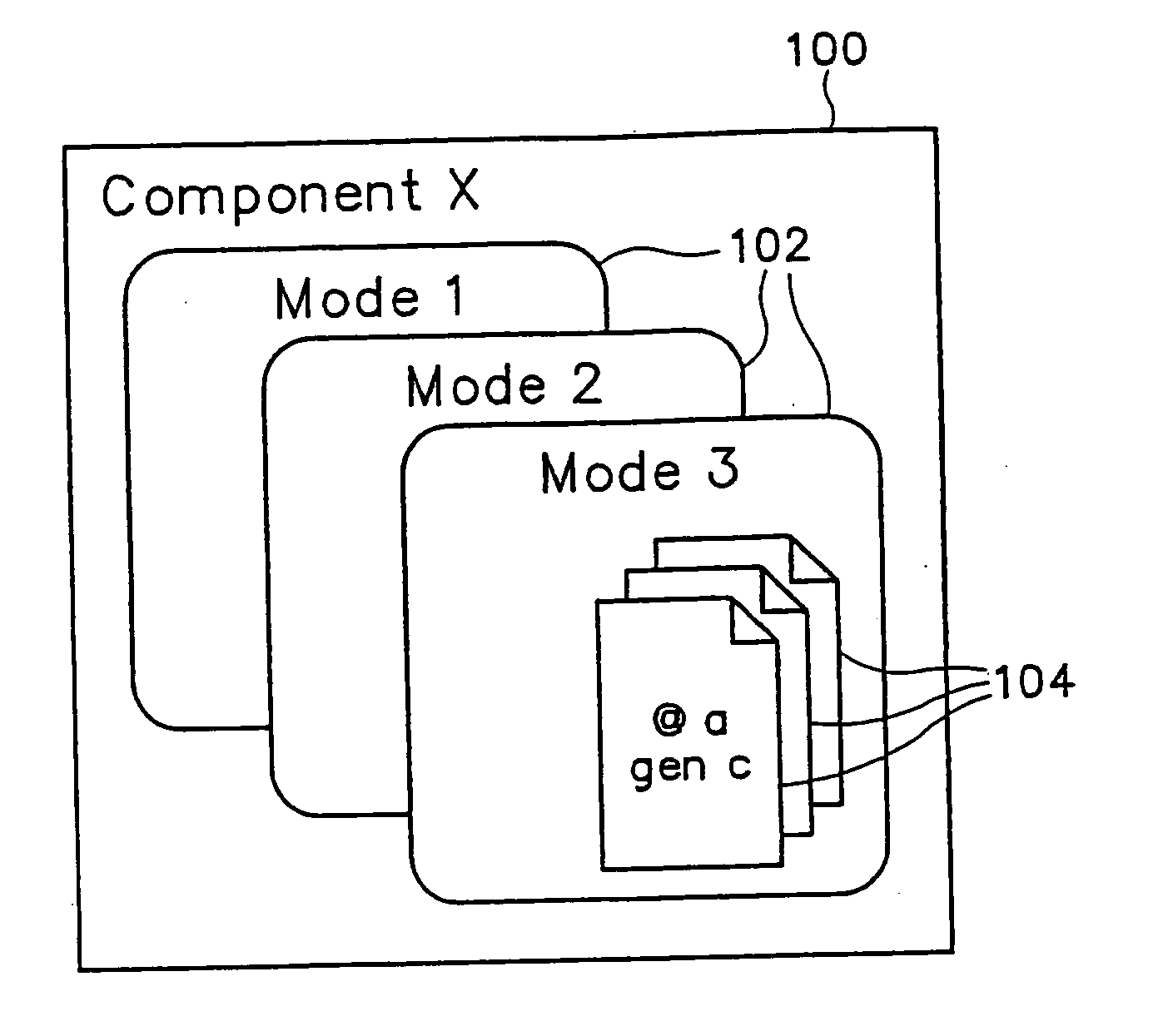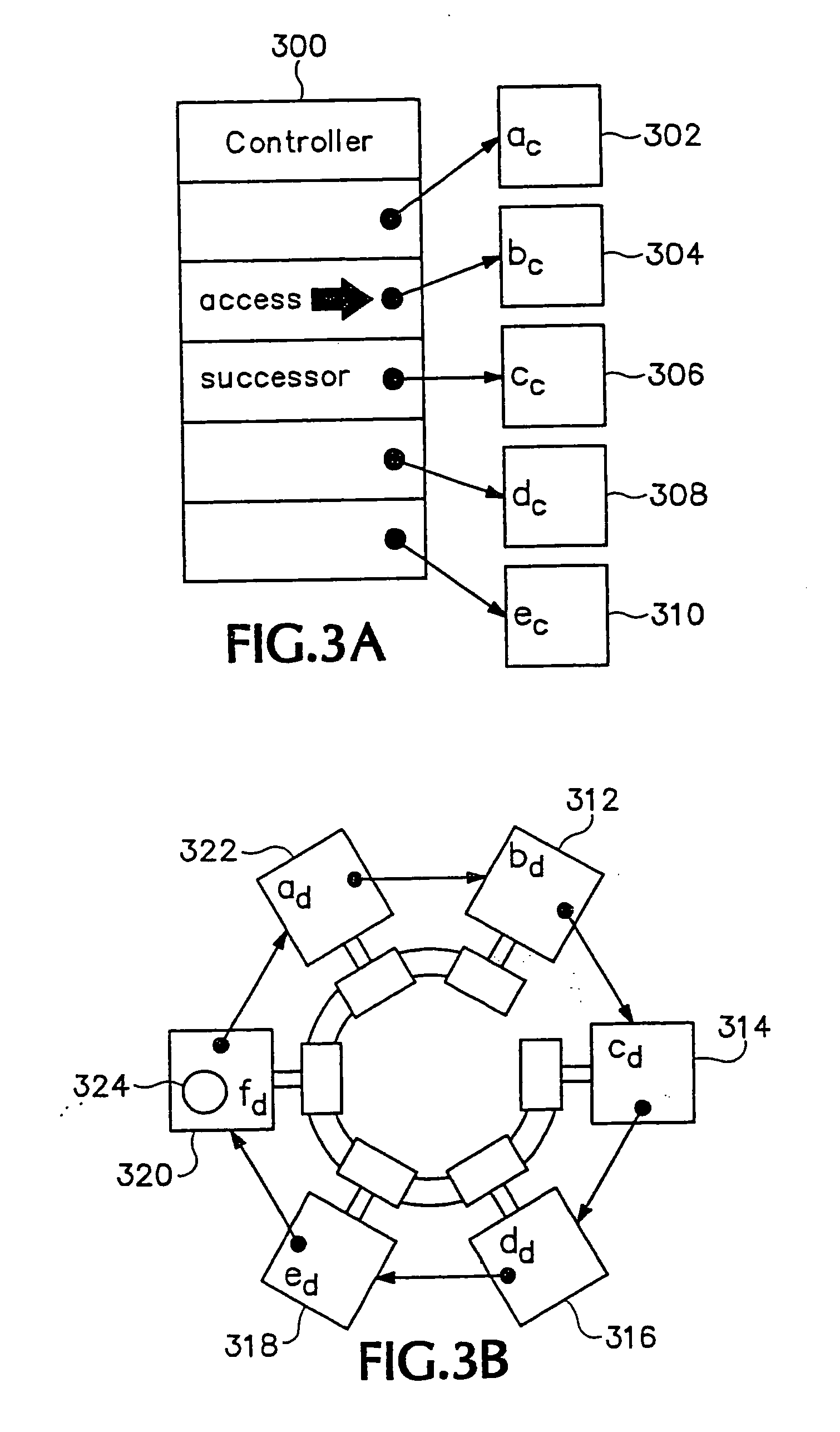Behavioral abstractions for debugging coordination-centric software designs
a software design and behavior abstraction technology, applied in the field of system and method for debugging concurrent software systems, can solve problems such as interface failure, programmer error-prone tasks, and lack of predictability
- Summary
- Abstract
- Description
- Claims
- Application Information
AI Technical Summary
Benefits of technology
Problems solved by technology
Method used
Image
Examples
Embodiment Construction
Coordination-Centric Software Design
[0116]FIG. 1 is an example of a component 100, which is the basic software element within the coordination-centric design framework, in accordance with the present invention. With reference to FIG. 1, component 100 contains a set of modes 102. Each mode 102 corresponds to a specific behavior associated with component 100. Each mode 102 can either be active or inactive, respectively enabling or disabling the behavior corresponding to that mode 102. Modes 102 can make the conditional aspects of the behavior of component 100 explicit. The behavior of component 100 is encapsulated in a set of actions 104, which are discrete, event-triggered behavioral elements within the coordination-centric design methodology. Component 100 can be copied and the copies of component 100 can be modified, providing the code-sharing benefits of inheritance.
[0117] Actions 104 are enabled and disabled by modes 102, and hence can be thought of as effectively being proper...
PUM
 Login to View More
Login to View More Abstract
Description
Claims
Application Information
 Login to View More
Login to View More - R&D
- Intellectual Property
- Life Sciences
- Materials
- Tech Scout
- Unparalleled Data Quality
- Higher Quality Content
- 60% Fewer Hallucinations
Browse by: Latest US Patents, China's latest patents, Technical Efficacy Thesaurus, Application Domain, Technology Topic, Popular Technical Reports.
© 2025 PatSnap. All rights reserved.Legal|Privacy policy|Modern Slavery Act Transparency Statement|Sitemap|About US| Contact US: help@patsnap.com



